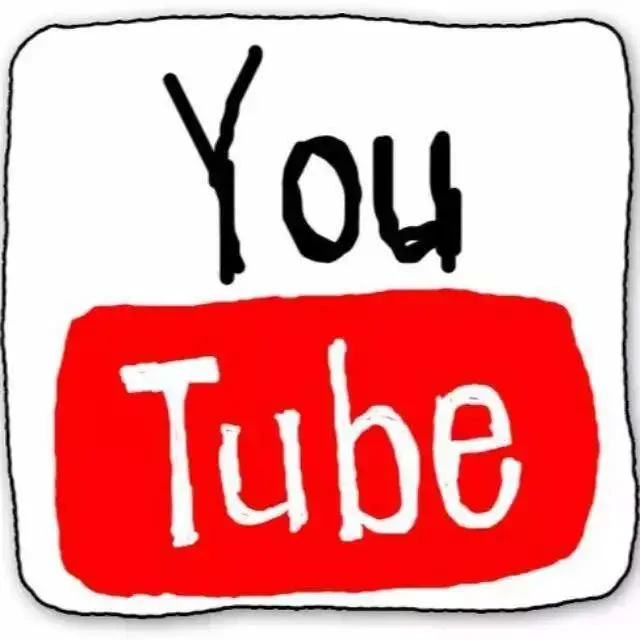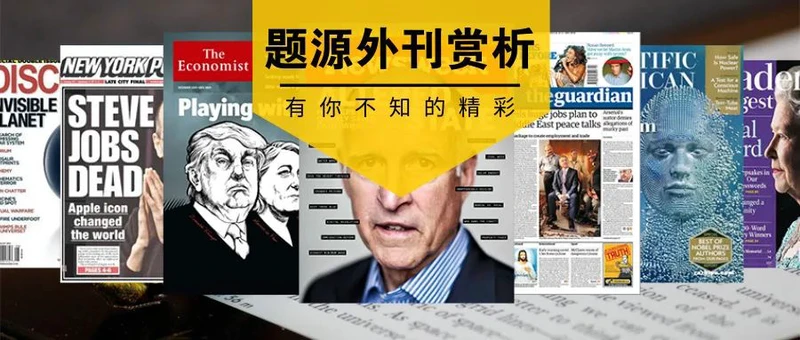点击蓝字关注我们

原文期刊:《彭博社》
原文标题:Let YouTube Be YouTube
本文选自《彭博社》2019年6月19日刊出的一篇文章。这是一篇“问题分析解决型”文章,围绕YouTube的内容审查政策展开,作者提出,应尽量减少对YouTube等媒体平台的内容管控,以限制评论、依法维权等方式抵御网络言论侵扰,从而保护网络言论的自由和大众化。
【行文脉络】提出问题(第一段)——分析原因(第二段)——说明影响(第三段)——提出对策(第四至五段)——得出结论(第六段)

Part 1
原文
ⅠYouTube’s latest attempt to crack down on hate speech has produced significant side effect. Policies designed to limit the spread of catastrophe denialism①wound up censoring videos that attacked denialism; a history teacher who dedicated his life to chronicling Nazi abuses found himself banned. These errors were more than just predictable, and they are more than just the latest illustration of the difficulty of applying the standards and practices of old media to new media. What they show is the fundamental difference between a social media company and a media company.
ⅡSociety expects major publishers to censordreadful views, and there can be little doubt that companies such as YouTube and Facebook are major publishers. Yet professional censorship depends on a publisher’s control of the production of content. The system doesn’t work in a world of user-created content. Now consider YouTube, which releases about 500 hours of content every minute, the vast majority of which is ignored. A small fraction, as determined largely by user engagement, is elevated to a mass audience. As a publisher, then, YouTube is not only depending on its users for its content, it is depending on them to help decide which content other users see. In newspaper terms, the user is both reporter and editor.
ⅢThis system is not without costs②. Yet it is also essential to the massive democratization of video content that YouTube has empowered. Content that might have struck traditional editors as trivial, controversial or just plain weird can, if given the opportunity, strike a chord with millions of users and move into the mainstream.
ⅣThe only solution is for YouTube to become a truly open platform. As much as possible, it should train both its humans and machines to err on the side of publication. If it is going to establish some principles for what it allows, as Felix Salmon and others suggest, they should be very permissive.
ⅤThat doesn’t mean YouTube can’t fight genuine harassment, which often comes from consumers rather than producers of content. For one, it can take technological steps to limit its harm, such as making aggressive blocking software available to keep comments from reaching those who don’t want to see them. It should also work with law enforcement to pursue serious threats that move offline and into the real world. It’s not always easy to draw that line, but with time it will get easier.
ⅥThese are admittedly imperfect solutions. Those are usually the only kind at first when a new technology comes along and disrupts old ways of doing things. What works for the news media won’t work for social media. Whatever the solution, however, the goal should be to reduce harms while protecting benefits. On that score, some degree of vile and offensive online speech may be a cost we have to manage in order to have a free and digitally democratized society.
Part 2
词汇短语
1.crack [kræk] v. 砸开;打击
crack down on sb/sth竭力取缔;严厉打击
2.side effect 意外的连带后果
3.catastrophe [kəˈtæstrəfi] n. 灾难;灾祸
4.wind [waɪnd] v. 蜿蜒向前,曲折而行
wind up 以...告终
5.dedicate...to...投(身);致力于
6.chronicle [ˈkrɒnɪkl] v. 按事件发生顺序记载
7.illustration [ˌɪləˈstreɪʃn] n. 例证;实例
8.practice [ˈpræktɪs] n. 惯例;常规
9.fundamental [ˌfʌndəˈmentl] adj. 十分重大的;根本的
10.major [ˈmeɪdʒə(r)] adj. 主要的;大的
11.censor [ˈsensə(r)] v. 审查(书刊、戏剧或电影等)
12.dreadful [ˈdredfl] adj. 讨厌的;令人不快的
13.publisher [ˈpʌblɪʃə(r)] n. 出版人(或机构)
14.censorship [ˈsensəʃɪp] n. 审查;审查制度
15.work [wɜ:k] v. 奏效;产生预期的效果
16.release [rɪˈli:s] v. 发布
17.vast [vɑ:st] adj. 巨大的;大量的
18.fraction [ˈfrækʃn] n. 小部分;少量
19.engagement [ɪnˈgeɪdʒmənt] n. 参与
20.elevate [ˈelɪveɪt] v. 提高,提升(地位)
21.mass [mæs] adj. 大批的;广泛的
22.massive [ˈmæsɪv] adj. 巨大的;庞大的
23.democratization [dɪˌmɒkrətaɪ'zeɪʃn] n. 大众化
24.empower [ɪmˈpaʊə(r)] v. 授权
25.strike [straɪk] v. 撞击
strike...as...给...印象;让...觉得
26.trivial [ˈtrɪviəl] adj. 微不足道的
27.controversial [ˌkɒntrəˈvɜ:ʃl] adj. 引起争论的;有争议的
28.plain [pleɪn] adv. 显然,完全地
29.*chord [kɔ:d] n. 和弦,和音
strike a chord with...激起共鸣;触动心弦
30.err [ɜ:(r)] v. 犯错误;出差错
err on the side of ... 宁愿过于...;力求...
31.publication [ˌpʌblɪˈkeɪʃn] n. 公布;发布
32.permissive [pəˈmɪsɪv] adj. 放任的;纵容的
33.harassment ['hærəsmənt] n. 骚扰;烦扰
34.aggressive [əˈgresɪv] adj. 好斗的;富于攻击性的
35.block [blɒk] v. 拦截
36.enforcement [ɪn'fɔ:smənt] n. 执行;实施
37.pursue [pəˈsju:] v. 跟踪
38.offline [ˌɒfˈlaɪn] adv. 离线地
39.admittedly [ədˈmɪtɪdli] adv. 诚然;无可否认
40.come along 出现
41.disrupt [dɪsˈrʌpt] v. 扰乱;使中断
42.on that score 就那个来说,在那个问题上
43.*vile [vaɪl] adj. 恶劣的
44.offensive [əˈfensɪv] adj. 冒犯的;无礼的
(标星号的为超纲词汇)
Part 3
翻译点评
ⅠYouTube’s latest attempt to crack down on hate speech has produced significant side effect. Policies designed to limit the spread of catastrophe denialism①wound up censoring videos that attacked denialism; a history teacher who dedicated his life to chronicling Nazi abuses found himself banned. These errors were more than just predictable, and they are more than just the latest illustration of the difficulty of applying the standards and practices of old media to new media. What they show is the fundamental difference between a social media company and a media company.
注释1:denialism(否认主义)在人类行为的心理学中,是一个人为避免心理上的不舒服而选择否认现实的一种行为。在科学中,否认主义是对无可争议的基本事实和概念的否认,如对气候变化、艾滋病及一些历史事件的否认。否认主义的动机包括自身利益(如经济、政治、金融因素)和心理防御等。
【翻译】:YouTube最近尝试对仇恨言论进行了严厉打击,这引起了严重的连带后果。一些政策旨在限制灾难否认主义的扩散,结果以审查抨击否认主义的视频告终;一位历史老师致力于记录纳粹的暴行,却发现自己的账号被封。这些错误不仅可以预见,也不仅仅是旧媒体的标准和常规做法难以应用于新媒体的最新证明。这些错误还表明,社交媒体公司和媒体公司之间具有根本区别。
【点评】:第一段,提出问题——YouTube的言论限制政策不能准确区分负面和正面言论,并指出原因——社交媒体和传统媒体具有根本区别。
主要逻辑衔接:首句提出话题,指出YouTube的言论政策具有副作用。第二句举例说明首句,指出其言论政策会“误伤”涉及敏感话题的正面言论。第三句指出问题的表层原因——传统做法难以应用于新媒体。第四句递进,指出问题的深层原因——社交媒体和传统媒体间具有根本区别。
核心关键词:①significant collateral damage(严重的连带后果);②fundamental difference(根本区别)。
ⅡSociety expects major publishers to censordreadful views, and there can be little doubt that companies such as YouTube and Facebook are major publishers. Yet professional censorship depends on a publisher’s control of the production of content. The system doesn’t work in a world of user-created content. Now consider YouTube, which releases about 500 hours of content every minute, the vast majority of which is ignored. A small fraction, as determined largely by user engagement, is elevated to a mass audience. As a publisher, then, YouTube is not only depending on its users for its content, it is depending on them to help decide which content other users see. In newspaper terms, the user is both reporter and editor.
【长难句分析】
A small fraction, as determined largely by user engagement, is elevated to a mass audience.
分析:本句主干为被动语态“A small fraction is elevated to...”。主句中,介词短语to a mass audience为状语,表示对象。as (it is) determined largely by user engagement为方式状语从句,从句中省略了和主句一致的主语it和系动词is,it指代主句主语A small fraction。
【翻译】:社会要求大型出版机构审查不良观点,而毫无疑问像YouTube和Facebook这样的公司就是大型出版机构。然而专业审查依赖出版机构控制内容生产。这个制度在由用户创造内容的领域行不通。现在考虑一下,YouTube每分钟发布约500小时内容,其中绝大部分被忽视了。只有主要由用户决定的一小部分被推送到广大用户面前。因此,作为一个出版平台,YouTube不仅依赖用户生产内容,也依赖用户帮其决定哪些内容可以让其他用户看到。用新闻术语来讲,用户既是记者,也是编辑。
【点评】:第二段承接上文,具体分析传统审核方式不适用于社交媒体的原因:传统媒体由出版方把控内容,而社交媒体由用户把控内容。
主要逻辑衔接:首句让步,承认YouTube等媒体平台具有审查平台内容的职责。第二至三句转折,指出社交媒体难以应用传统方式进行内容审查,并从内容生产方面分析原因:传统媒体由出版方把控内容,而社交媒体由用户创造内容。第四至五句递进,从内容推选方面分析传统审查方式不适用于社交媒体的原因:社交媒体由用户决定推广的内容及过程。第六至七句总结,强调用户对于YouTube等社交媒体内容推广的重要作用:既是发布者,也是审核者,再次暗示社交媒体难以利用传统方式进行内容审查。
核心关键词:①both reporter and editor(既是记者,也是编辑)。
ⅢThis system is not without costs②. Yet it is also essential to the massive democratization of video content that YouTube has empowered. Content that might have struck traditional editors as trivial, controversial or just plain weird can, if given the opportunity, strike a chord with millions of users and move into the mainstream.
注释2:cost为多义词,做名词表示“代价”时为单数,此处复数形式为固定用法,表示“成本”。
【长难句分析】
Content that might have struck traditional editors as trivial, controversial or just plain weird can, if given the opportunity, strike a chord with millions of users and move into the mainstream.
分析:本句主干为主谓宾结构“Content can strike a chord and move into the mainstream”。that引导的从句that might have...plain weird为定语从句,修饰content,引导词that在从句中做主语,指代content;as trivial...weird为主补,补充说明主语that(指代content)的特征。if (it is) given the opportunity为条件状语从句,省略了主语it与be动词,主语it指代主句主语content;strike a chord with...为固定搭配。
【翻译】:这个制度并非没有成本。然而对于使YouTube授权的视频内容大众化而言,这个制度至关重要。那些令传统编辑觉得微不足道、具有争议抑或仅仅是十足荒诞的内容,如果有机会,会引起数百万用户的共鸣,并进入主流群体的视线。
【点评】:第三段指出YouTube的内容“生产-审查方式”对于数字内容大众化至关重要。
主要逻辑衔接:首句让步,承认YouTube用户自产自审的内容生产制度有其成本。第二句转折,强调YouTube的内容生产制度有利于视频内容的大众化。第三句论证第二句,具体说明数字媒体内容的大众化传播可能。
核心关键词:①massive democratization of video content(视频内容大众化)。
ⅣThe only solution is for YouTube to become a truly open platform. As much as possible, it should train both its humans and machines to err on the side of publication. If it is going to establish some principles for what it allows, as Felix Salmon and others suggest, they should be very permissive.
【翻译】:对于YouTube而言唯一的解决方案是成为一个真正开放的平台。YouTube应尽量以力求推广为目的培训员工、设置机器。如果要制定一些内容发布规则,正如菲利克斯·萨尔蒙和其他人所建议的那样,这些规则应非常宽容。
【点评】:第四段提出建议,指出YouTube的内容审查应保持开放性原则。
主要逻辑衔接:首句总述,明确提出YouTube应保持其开放性。第二、三句从培训及内容规范两方面分别强调YouTube应保持其开放性。第二句指出人工培训与程序设置都要以内容推广为先。第三句指出内容规范亦不应破坏内容的开放性,应尽量宽泛。
核心关键词:①a truly open platform(一个真正开放的平台)。
ⅤThat doesn’t mean YouTube can’t fight genuine harassment, which often comes from consumers rather than producers of content. For one, it can take technological steps to limit its harm, such as making aggressive blocking software available to keep comments from reaching those who don’t want to see them. It should also work with law enforcement to pursue serious threats that move offline and into the real world. It’s not always easy to draw that line, but with time it will get easier.
【长难句分析】
For one, it can take technological steps to limit its harm, such as making aggressive blocking software available to keep comments from reaching those who don’t want to see them.
分析:本句主干为主谓宾结构“it can take technological steps”。主语it指代上句所提YouTube,to limits its harm为目的状语,its指代上句genuine harassment(’s);such as..available举例说明steps的内容,to keep ...those为目的状语,说明such as后所举例子的目的,who don’t want to see them为定语从句,修饰those,引导词who在从句中做主语,指代those。
【翻译】:这并不意味着YouTube不能打击真正的骚扰言论,这些骚扰往往来自内容消费者而非内容生产者。举例来说,YouTube可以采取技术步骤阻止损害扩散,比如使用有效的拦截软件,以避免用户看到不想看的评论。YouTube也应和执法部门合作,追踪那些离线进入现实世界的严重威胁。有时很难划分一般内容和不良言论的分界线,但随着时间的推移会变得容易起来。
【点评】:第五段提出应对网络不良言论的具体对策。
主要逻辑衔接:首句承接上文,指出YouTube处理不良言论的方向为内容评论而非内容本身。第二、三句分别以拦截软件、法律措施为例具体说明YouTube可以如何处理不良言论。第四句先让步后转折,先承认区分不良言论的困难性,而后肯定这项事业的正当性和可行性。
核心关键词:①fight genuine harassment(打击真正的骚扰言论)。
ⅥThese are admittedly imperfect solutions. Those are usually the only kind at first when a new technology comes along and disrupts old ways of doing things. What works for the news media won’t work for social media. Whatever the solution, however, the goal should be to reduce harms while protecting benefits. On that score, some degree of vile and offensive online speech may be a cost we have to manage in order to have a free and digitally democratized society.
【翻译】:无可否认这些解决方案并不完美。但是在新技术出现且原本处理事情的方式行不通时,这些方案起初通常是唯一的方案。对新闻媒体有效的方式对社交媒体不起作用。然而,无论采取什么方案,目标都应是在保护益处的同时减少损害。在这个问题上,容忍某种程度的恶劣无理言论可能是我们实现自由、数字内容大众化的社会必须承担的代价。
【点评】:第六段得出结论,指出YouTube应保持其数字内容的大众化。
主要逻辑衔接:第一、二句先让步后转折,指出当前阶段并没有完美的解决措施。第三句解释原因:现有的新闻媒体的审查方式不适用于社交媒体。第四句递进,回指首段,强调YouTube内容审查不应损害正面内容的传播。第五句得出结论,指出为了数字内容大众化的目标,应容忍某些不良言论,明确交代作者对数字内容大众化的支持。
核心关键词:①have a free and digitally democratized society(实现自由、数字内容大众化的社会)。

太详细,6节课只讲一篇阅读真题
科学统计告诉你数学考什么,怎么考
考研英语黄皮书配套课全在这儿
右下角的每一枚“在看”
都是小编找更多资料的动力
点击阅读原文进入20考研题源外刊赏析(升级版)

我知道你在看哟



